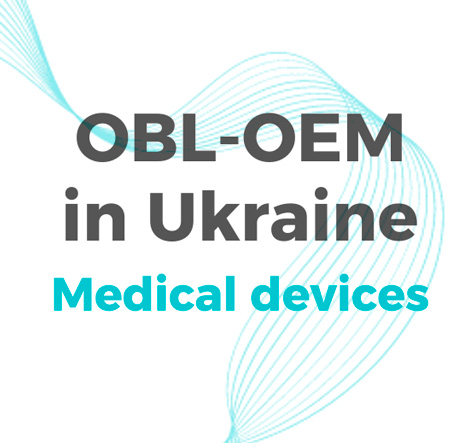On August 3, 2024, the Technical regulation on cosmetic products, approved by the Cabinet of Ministers of Ukraine (CMU) Resolution No. 65 dated January 20, 2021, came into force. This regulation is based on Regulation (EC) No. 1223/2009 and fundamentally changes the requirements for cosmetic products and their market entry.
This regulatory act is mandatory for all market operators to follow. It enhances the safety of cosmetic products and organizes the responsibilities and accountability of all market participants (manufacturers, importers, distributors, consumers, and the competent authority).
The regulation completely changes the procedure for introducing cosmetic products to the market. Market entry is significantly simplified, as it no longer requires obtaining permits, only notifying the competent authority by providing relevant product information on a special portal (product notification).
At the same time, oversight and control over products already on the market are strengthened, as cosmetic products become subject to state market surveillance. Resolution No. 65 adds them to the list of products under state market surveillance, approved by CMU Resolution No. 1069 dated December 28, 2016.
Each cosmetic product must have a designated responsible person, without whom the product cannot be placed on the market. The responsible person is considered to be either the manufacturer residing in Ukraine, the importer, or a third party authorized in writing by them. The responsible person is obliged to ensure compliance with the regulation.
The requirements for the composition of cosmetic products have been changed: the regulation establishes lists of prohibited and restricted substances, permissible colorants, preservatives, and UV filters.
Before being placed on the market, cosmetic products must undergo a safety assessment. Based on this assessment, a document of established form – a cosmetic product safety report, signed by a qualified expert – must be prepared. The report is the most important and valuable part of the product information file – a set of documentation that must be prepared and assembled for the product. The file must be kept by the responsible person at the address indicated on the product packaging for at least 10 years from the date the last batch of the product is placed on the market and must be available to the market surveillance authority.
After the product is placed on the market, the responsible person must monitor the safety of their product – “cosmetic surveillance.” Information about all adverse effects experienced by consumers when using the product must be collected and registered, and serious adverse effects must be reported to the State Medicines Service by the responsible person, as well as by distributors, consumers, and healthcare professionals.
The regulation also establishes specific labeling requirements, listing mandatory information that must be provided to the consumer.
The regulation mandates the implementation of Good Manufacturing Practices (GMP) to ensure that products are manufactured in a clean environment and are not contaminated during production.
Along with the Technical Regulation, the Procedure for notification (submission) of information on cosmetic products was approved by the Order of the Ministry of Health of Ukraine No. 2147 dated December 18, 2023, with amendments approved by the Order of the Ministry of Health of Ukraine dated July 19, 2024, No. 1264, also came into force. This procedure defines the mechanism for notifying (providing) information on cosmetic products and the procedure for forming and maintaining the System of electronic notification (submission) of information on cosmetic products (a system similar to EU CPNP).
On July 17, 2024, the Ministry of Health of Ukraine Order No. 1247 approved the Methodological recommendations for the application of the technical regulation on cosmetic products regarding borderline categories of cosmetic products. These recommendations aim to facilitate understanding of whether a borderline product falls under the scope of the Technical Regulation on Cosmetic Products, as there are often cases of uncertainty regarding the classification of certain products as cosmetic or other types of products under different sectoral legislation (medicinal products, medical devices, disinfectants, toys, etc.). These products are referred to as “borderline products.” The recommendations are a collection of practical examples of how to apply the legislation in each specific case.
On July 23, 2024, Resolution No. 847 of the Cabinet of Ministers of Ukraine approved the Technical Regulation on the safety of chemical products (UA REACH), which will come into force on January 26, 2025. This regulation is based on Regulation (EC) No. 1907/2006 on the Registration, Evaluation, Authorization, and Restriction of Chemicals (REACH). The regulation applies to chemical products that are imported, placed on the market, or manufactured in Ukraine. Chemical products cannot be placed on the Ukrainian market if they do not comply with this regulation.
The provisions of this regulation also apply to substances and mixtures used in cosmetic products. Each chemical substance in a cosmetic product must be pre-registered if the annual production or import volume of the substance exceeds 1 ton. The state registration is carried out by the Ministry of Environmental Protection and Natural Resources based on the submitted application, technical dossier, and chemical substance safety report. If the decision is positive, the chemical substance is entered into the State Register of Chemical Substances.
In the case of chemical substances registered in the European Union, state registration is carried out under a simplified procedure based on the corresponding application, technical dossier, a copy of the chemical substance safety report obtained through the registration procedure under Regulation (EC) No. 1907/2006, and a document confirming the registration of the substance through the REACH-IT system of the European Chemicals Agency.
For chemical substances subject to state registration and placed on the Ukrainian market in quantities of at least 10 tons per year per applicant for state registration, a safety assessment of the chemical substance must be conducted, and a chemical substance safety report must be prepared. However, as an exception, the safety report for a chemical substance used in cosmetic products should not evaluate risks to human health to avoid duplicating requirements with the Technical Regulation on Cosmetic Products, which already requires a mandatory safety assessment of cosmetic products for human health.
The section of the regulation requiring the provision of a safety data sheet for chemical products does not apply to cosmetic products.
The regulation may also directly restrict the use of certain substances in cosmetic products to eliminate risks not covered by the Technical Regulation on Cosmetic Products. For example, from January 1, 2025, the placing on the market of rinse-off cosmetic products containing silicones such as nonylphenol (D4) and nonylphenol ethoxylate (D5) in concentrations ≥ 0.1% by mass will be prohibited due to their environmental hazards.
The regulation will also prohibit placing cosmetic products with intentionally added microplastics on the market if the concentration is ≥ 0.01% by mass. Microplastics are often added to cosmetic products for various purposes, such as exfoliation or achieving a specific texture, fragrance, or color.
Intentionally added microplastics must be removed from cosmetic products according to the following timelines: by August 17, 2027, for “rinse-off products,” by August 17, 2035, for “lip products,” “nail products,” and “makeup products,” and by August 17, 2029, for “leave-on products.”
The regulation may also set requirements for product information and labeling. For example, the mandatory statement “This product contains microplastic” will be introduced for “lip products,” “nail products,” and “makeup products” that contain synthetic polymer micro-particles.
On May 10, 2024, Resolution No. 539 of the Cabinet of Ministers of Ukraine approved the Technical regulation on the classification, labeling, and packaging of chemical Products (UA CLP), which will also come into force on January 26, 2025. This regulation is based on Regulation (EC) No. 1272/2008 (CLP) and applies to chemical raw materials used in the production of cosmetic products.
It introduces rules and criteria for the classification of hazardous chemical substances and products into 33 hazard classes, as well as requirements for the labeling and packaging of chemical products. Manufacturers, importers, suppliers, and other operators must gather all available information on the hazardous properties of a chemical product before placing it on the market, evaluate the validity of this information, and classify the hazardous properties of the chemical substance according to all the classes, differentiations, and categories defined by the Technical Regulation.
Although the requirements of this regulation do not apply to finished cosmetic products, it has a significant impact on the Technical Regulation on Cosmetic Products, which includes a ban on the use of CMR substances of categories 1A or 1B. Thus, the Technical Regulation on the Classification, Labeling, and Packaging of Chemical Products serves as a source of information for prohibiting such substances.
It is worth noting that the Technical Regulation on Aerosol dispensers, approved by Resolution No. 154 of the Cabinet of Ministers of Ukraine dated February 21, 2023, has been in effect since November 25, 2023. This regulation was developed based on EU Directive 75/324/EEC. The provisions of this regulation also cover a wide range of cosmetic products manufactured in aerosol form, such as hair sprays, shaving foams, dry shampoos, deodorants, etc.
The regulation includes specific requirements regarding flammability and pressure hazards, as well as a general obligation to analyze all hazards that may relate to a particular aerosol product. It also establishes requirements for testing methods for such aerosol products and a list of mandatory information that must be included on the labeling. Additionally, before labeling, the product must be classified into categories – non-flammable, flammable, or extremely flammable aerosol. The regulation also requires the application of the conformity mark – the “inverted epsilon” symbol.
Cratia provides comprehensive regulatory support and accompanies at all stages of regulatory compliance of cosmetic products in Ukraine:
- outsourcing of a Responsible Person (RP) in Ukraine;
- assessment of the composition of the product;
- filling of the Product Information File (UA PIF);
- Ukrainian safety assessor services and filling of Cosmetic Product Safety Report (UA CPSR);
- development of labeling, instructions, and advertising materials in Ukrainian language;
- product notification on Ukrainian cosmetics portal;
- development and implementation of GMP in accordance with ISO 22716;
- legal and consulting support of the manufacturer, Responsible person or distributor (importer).
We possess deep knowledge and experience in the technical regulation of cosmetic products and have fluent English. We will take over the organization of the process, assist in filling of the set of documents, and perform the required procedures in a short time.
We provide preliminary consultations free of charge, call us by phone +38 (068) 064-78-31, +38 (044) 223-61-67, or write to the e-mail info@cratia.ua, or visit our office.



